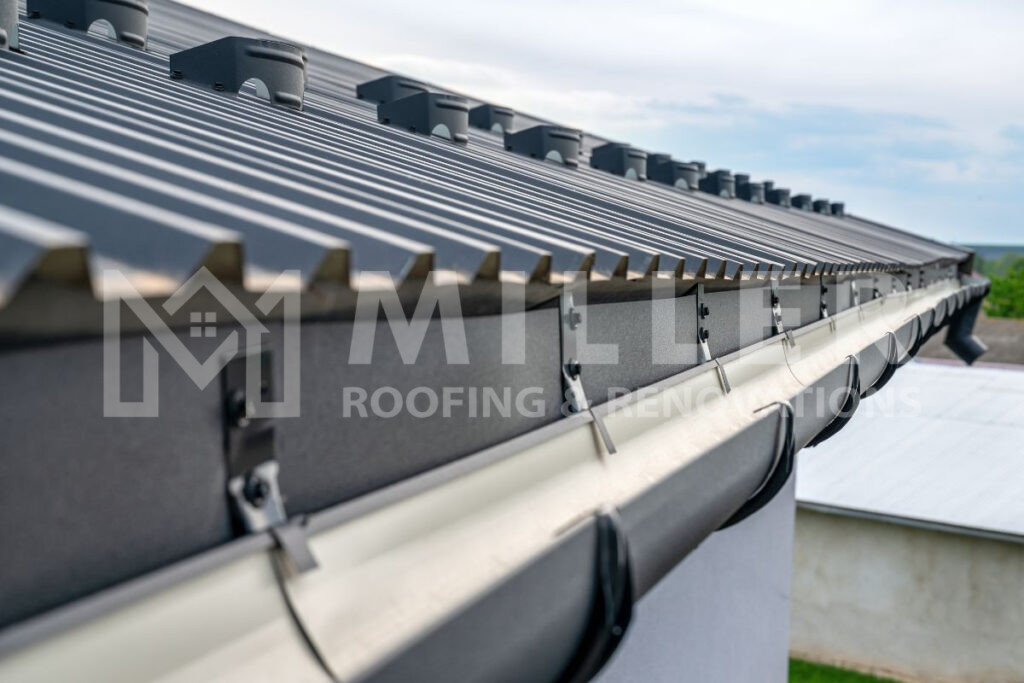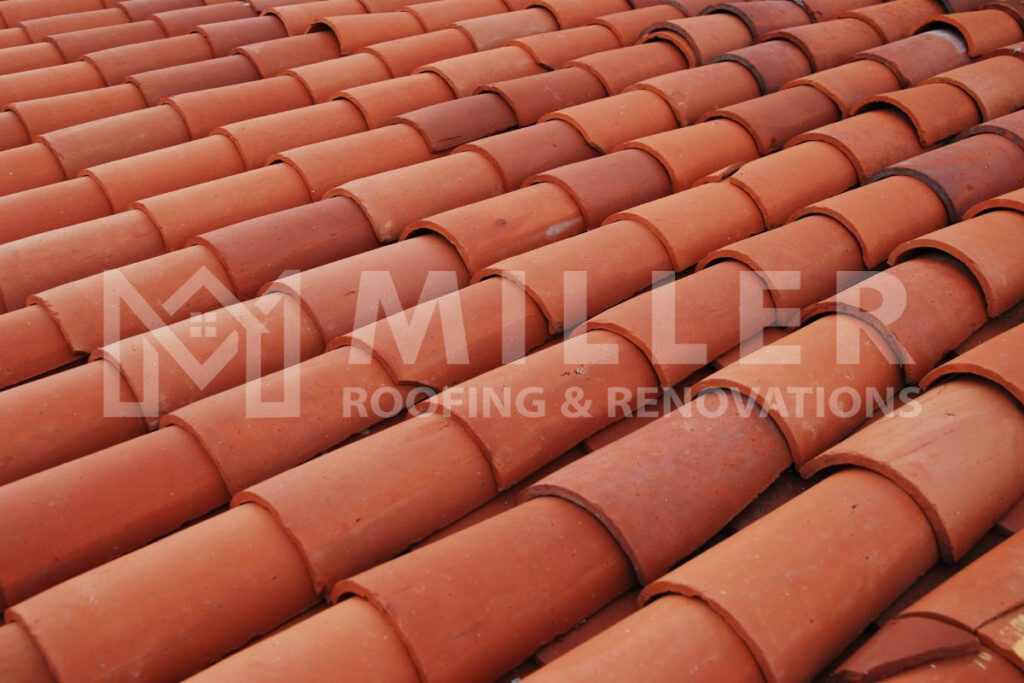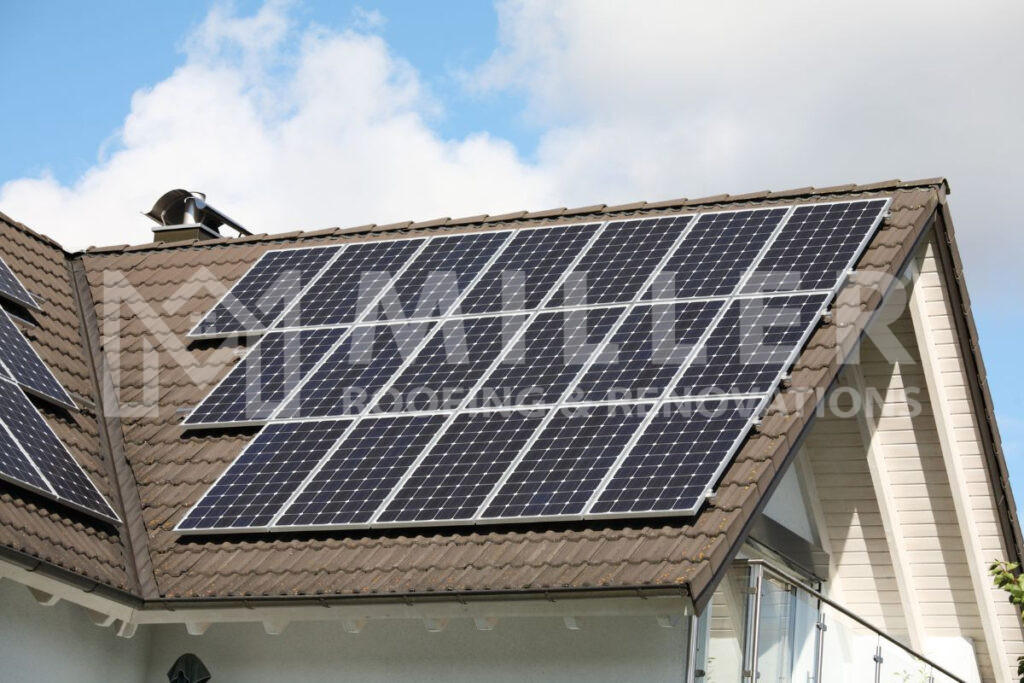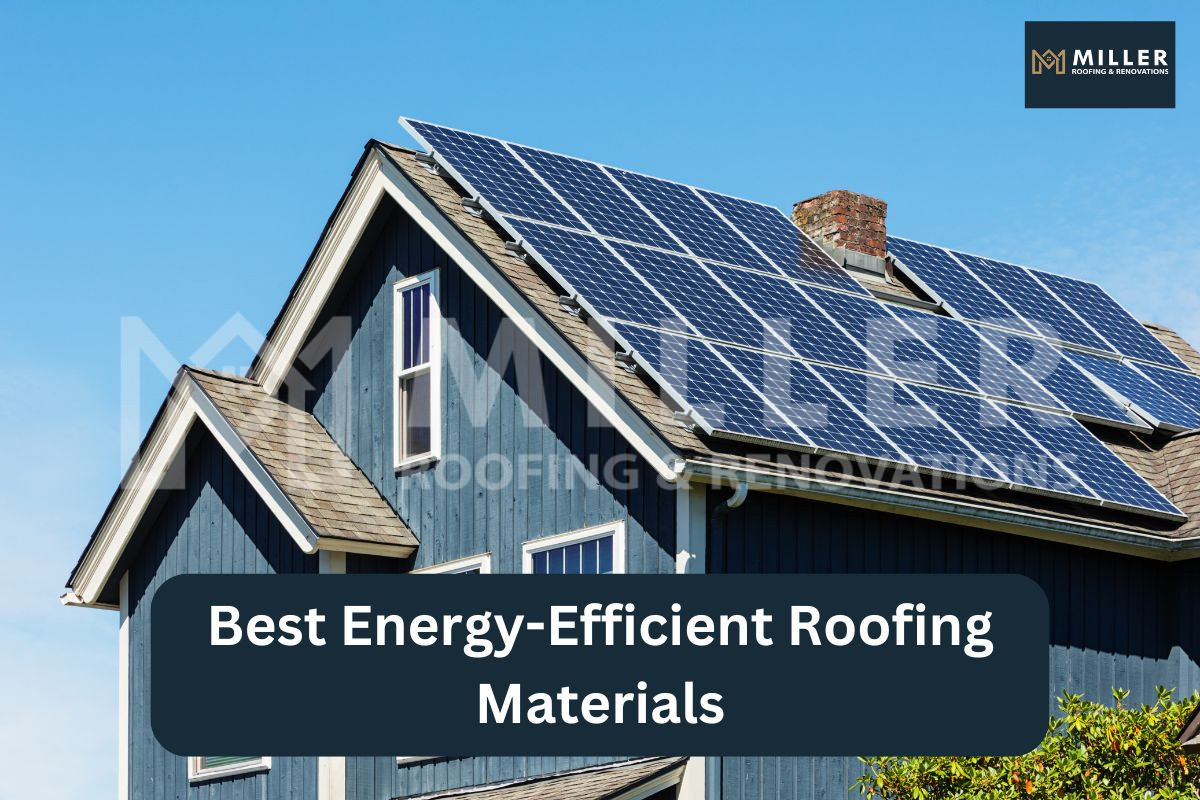If you live in a hot area with high temperatures, energy-efficient roofing materials can help maintain a cooler interior and reduce your need to use AC units within the home. Typically, roofing materials that provide this simply reflect more sunlight than standard materials.
At Miller Roofing and Renovations, we always aim to guide homeowners with the best information on exterior home features. Investing in the right materials for your roof is important for durability and longevity.
What Is A Cool Roof?
A cool roof is any roofing system that is designed to stay cooler in the sun compared to standard roofing materials. These roofs will use special materials or coatings to achieve this, helping to reflect more sunlight and absorb more heat, which keeps the interior of your house comfortable.
Some areas in the country offer special financial benefits to help you pay for a cool roof, such as rebates or low-cost loans. These incentives are available for both homes and businesses.
Cool roofs aren’t just good for your wallet, they’re great for the environment too. Green building programs often give special labels to buildings with cool roofs. To stay updated on available incentives, relevant building codes, and cool roof standards in your location, visit the Cool Roof Rating Council (CRRC) website.
What Are The Most Popular Energy-Efficient Roofing Materials?
Here are some common roofing materials that make your roof more energy-efficient.
1. Membranes
For commercial or flat roofing systems, certain single-ply membranes such as TPO offer enhanced energy efficiency compared to other materials like modified bitumen. These types of systems are excellent at reflecting sunlight and reducing heat absorption. They’re also easy to install and maintain.
2. Reflective Roof Shingles
Some brands, like Owens Corning, offer shingles made with cool roof technology. These shingles are made with special coatings that make them suitable for hot temperatures and much more energy efficient than traditional roofing options. These innovative shingles combine the familiar look of standard roofing materials with advanced cool roof technology, offering homeowners an attractive and practical solution for energy-efficient roofing.
3. Metal

Metal roofs are highly energy efficient and reflect the sun’s energy instead of absorbing it, keeping your home cooler. Available in various colors, even darker metal roofs can be energy efficient due to special pigments. They’re durable, recyclable, and can significantly reduce cooling costs.
Also Read: 7 Best Metal Roof Colors For Your Home
4. Tile

Certain roof tiles, such as ceramic and terra-cotta tiles, provide a cooling effect to your home. Light-colored tiles also reflect more sunlight, while some have special coatings for enhanced reflection. Overall, they’re favored for being durable while also providing an enhanced appearance.
5. Solar Roofs

Solar roofs are a smart, energy-efficient choice for homeowners. They turn sunlight into electricity, lowering your energy bills. While they can be expensive to install, they often pay for themselves over time. Solar roofs help keep your house cooler by absorbing sunlight, and they work for many years. They’re good for the environment too, as they don’t cause pollution. Solar roofs can also increase your home’s resale value, making them a good investment if you plan to sell your home.
What Color Roof Is The Most Energy Efficient?
White is the best roof color for energy efficiency. According to the Heat Lab Group, white-colored roofs reflect 80% of the sunlight on a bright, sunny, and hot afternoon in comparison to gray roofs, which typically only reflect 20% of sunlight off its surface.
This high reflectivity makes white roofs effective at keeping your home cool. When sunlight hits a white roof, most of it bounces off instead of being absorbed. White roofs also help reduce the urban heat island effect in cities, making the overall environment cooler. They’re a simple but powerful tool for energy-efficient roofing.
What Are The Drawbacks Of A White Roof?
While white roofs offer amazing energy efficiency, they also have some potential drawbacks that you need to consider before choosing them for your building.
#1 You May Struggle With Heat In Winter
Since white roofs are effective at reflecting heat rather than absorbing it, you might need to utilize your home’s heating system more often in the winter. This may, in turn, cause you to pay higher energy bills.
#2 White Roofs Become Dirty Easily
White and lighter colored roofs, in general, show dirt easier than dark ones. You might need to clean them more often to keep them looking their best and stay effective at reflecting sunlight.
Call Miller Roofing And Renovations For Quality Cool Roof Installations In Memphis, Tennessee
If you are looking for a reliable partner for roof installations, then we are here to assist you! At Miller Roofing and Renovations, we’re all about getting you a great roof in Memphis and the surrounding areas in Tennessee. We know roofs are super important, so we offer a free quote for any kind of roof replacement you need, whether it’s for your home or business. We truly want our customers to be happy, so we work extra hard to do a top-notch job. If you need a roofing contractor you can trust, call us at (901) 457-9405.
Our team knows roofs inside and out. We’ll listen to what you want, closely examine your roof, and provide our honest, expert opinion on what you need.



 FREE ESTIMATE
FREE ESTIMATE